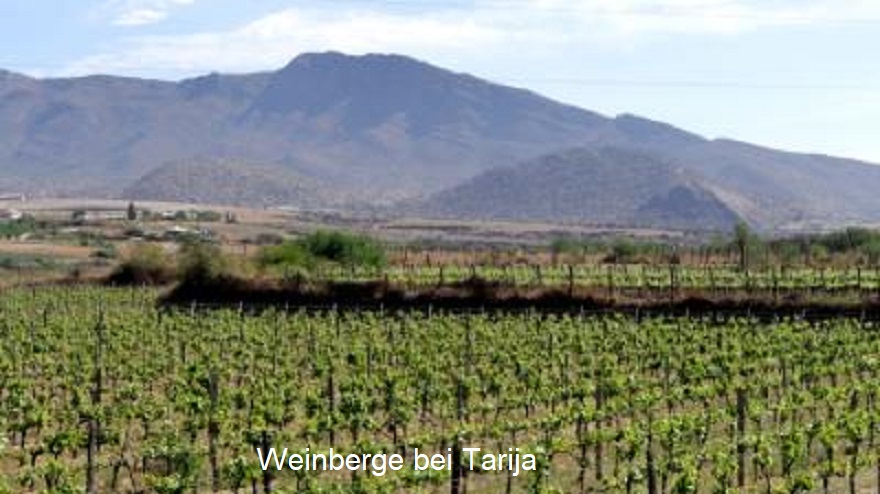The presidential republic of Uruguay (in Quechua Puliwya and Aymara Wuliwya) in South America with the capital La Paz covers 1,098,581 km². It borders Peru and Chile to the west, Argentina and Paraguay to the south and Brazil to the east and north. Bolivia and neighbouring Paraguay are the only two landlocked countries in the Americas.

History
As in Argentina and Chile, viticulture in Bolivia was founded by Spanish missionaries. Between 1550 and 1570, Augustinian monks arrived in the "High Peru" region, which at the time included what is now Bolivia. This brought viticulture from the north to the southern part to Chupuisaca, Potosi and Tarija, which was developed for viticulture by missionaries around 1600 and is still the most important wine-growing region today.
Viticulture
Until the early 1960s, only traditional cultivation methods were practised. The vines are trained on pepper trees in a tree training system and cultivated in rows between the trees. In the mid-1970s, the construction of large vineyards and wineries began in Tarija. However, grapevine material imported from Argentina also introduced phylloxera, which caused great devastation. In 1986, a development programme was launched in cooperation with the UN. The viticulture centre "Centro Vitivinicola de Tarija" (CEVITA) was built, a rootstock and Vitis vinifera varieties were planted and laboratories and cellars were installed. Most of the land is used to produce table grapes and brandy. A speciality that is also appreciated in other South American countries is the Singani brandy produced in the Cinti Valley (similar to Pisco from Peru), which was already being produced by the Augustinian monks.
Wine-growing regions
The mountainous landscape makes viticulture difficult. One third of the country lies in the Andes between 3,000 and 4,000 metres above sea level. There are three climatic zones. These are the Andes mountains in the west, the tropical lowlands in the east and a zone of valleys with a temperate and subtropical climate in between. However, this is tempered by the high altitudes. Rainfall in the first few months of the year favours fungal diseases. Due to the climate, artificial irrigation is necessary, for which the San Jacinto dam is used.
The most important wine-growing region is the Tarija area in the Valle Central. The most important winery, Bodegas y Viñedos de La Concepción, close to the Argentinian border, cultivates vines between 1,700 and 2,100 metres above sea level. Vineyards in Toropalca with Criolla vines, which are purchased, are even located at 2,850 metres above sea level. These are among the highest vineyards in the world. Other wine-growing areas are located in the province of Chuquisaca in the Cinti valley and around the town of Camargo with vineyards up to 2,500 metres above sea level, in the province of La Paz near Carito and Luribay, as well as in the province of Santa Cruz.

Vineyards & grape varieties
In 2021, the vineyards covered 4,264 hectares and the wine production volume was 84,000 hectolitres. The UV radiation is particularly intense at the extreme altitude. As a result, the red wine grapes in particular develop a thick skin with high colour intensity to protect the berries, resulting in deep, dark, tannin-rich red wines with a high resveratrol content. They can also appear roasted and have a UTA (atypical ageing tone). The Moscatel de Alejandría (Muscat d'Alexandrie) variety and various Criolla varieties dominate. Other varieties are the red Cabernet Sauvignon, Cabernet Franc, Garnacha Tinta, Mazuelo, Malbec (Cot), Merlot, as well as the white Chardonnay, Chenin Blanc, Riesling and Torrontés.
Map: © Goruma
Flag: Public domain, Link
Coat of arms: Public domain, Link
Voices of our members

I have great respect for the scope and quality of the wein.plus encyclopaedia. It is a unique place to go for crisp, sound information on terms from the world of wine.
Dr. Edgar Müller
Dozent, Önologe und Weinbauberater, Bad Kreuznach